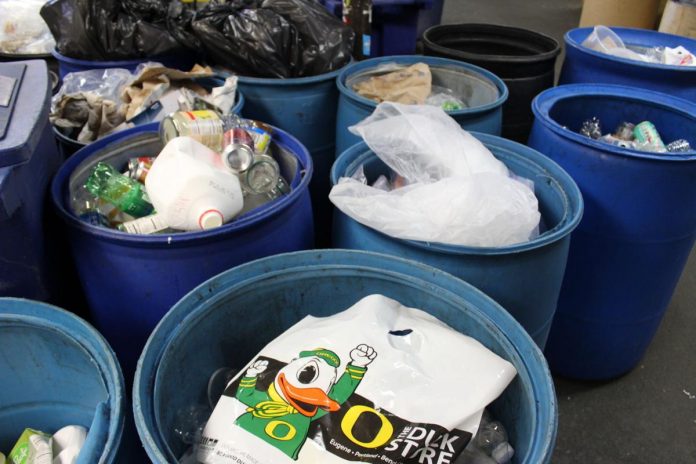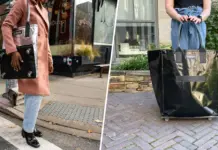In 2016, the University of Oregon Zero Waste Program diverted over 55 percent of the physical waste produced on campus.
“It says that the majority of students, faculty, staff, the whole university are using the systems,” Cimmeron Giilespie, the Zero Waste marketing coordinator said. “That is an active choice that people make every day and the fact that people are using it is really wonderful.”
The program is responsible for the recycling stations on campus that feature four different bins: landfill, compost, paper and other recyclable goods. The program also helped push for the installation of water bottle refill stations at water fountains around campus.
One of the biggest events of the year for Zero Waste is on June 16 at 7 p.m. UO students living in residence halls will have all moved out and with help from the UO Zero Waste Program, any of their belongings they wish to get rid of will be either recycled or donated to charity.
Kaplan estimates that it brings in three to four times the amount of materials as other events they collect at.
“We really make a push to get recyclables,” Kaplan said. “We try to make sure that everybody gives us all their reusable plates and baskets,”
The UO Zero Waste program was founded in 1991 by a group of students. Since then it has grown and developed a number of other programs. Today it employs around 50 student workers with a few non-students as administrative staff.
“We have worked really hard on having a presence [around campus],” said Kaplan. “We are out all over the place, so there is a lot of interaction with our staff as well, and one of our greatest assets is our student employees.”
In addition to the dorm move-outs, the Zero Waste Program helps collect waste at a number of other events: the campus street fair, Folk Fest and dorm move-ins. After collecting materials from Zero Waste stations, the materials are taken to an off-campus facility where members of the program sort through everything and separate it into recyclable, landfill and compost bins. The UO program is one of the top Zero Waste Programs in the country, according to Kaplan.
A few years ago, members of the program created a Zero Waste Campus Toolkit that is meant to help other universities learn how to create a Zero Waste Campus by giving them an overview of how to get started and be successful. The toolkit, which can be downloaded for free from the the Zero Waste website, provides additional information on what Zero Waste is, definitions of terms related to it and the benefits of it.
“I have heard more than once when they have done student surveys that the presence and the Zero Waste effort has been one of the top reasons that students come to school here,” said Kaplan “What that does is that it shows that the U of O cares.”
Analysis:
The University of Oregon zero-waste program provides us with a model of what waste management can look like when it becomes a deeply-rooted part of the collective consciousness. The key takeaway here, I think, lies in the element of student ownership. By making a portion of the waste-sorting process local, and involving student employees directly, waste instantly becomes more “real” to everyone on campus, and heightens the overall sense of individual responsibility.




